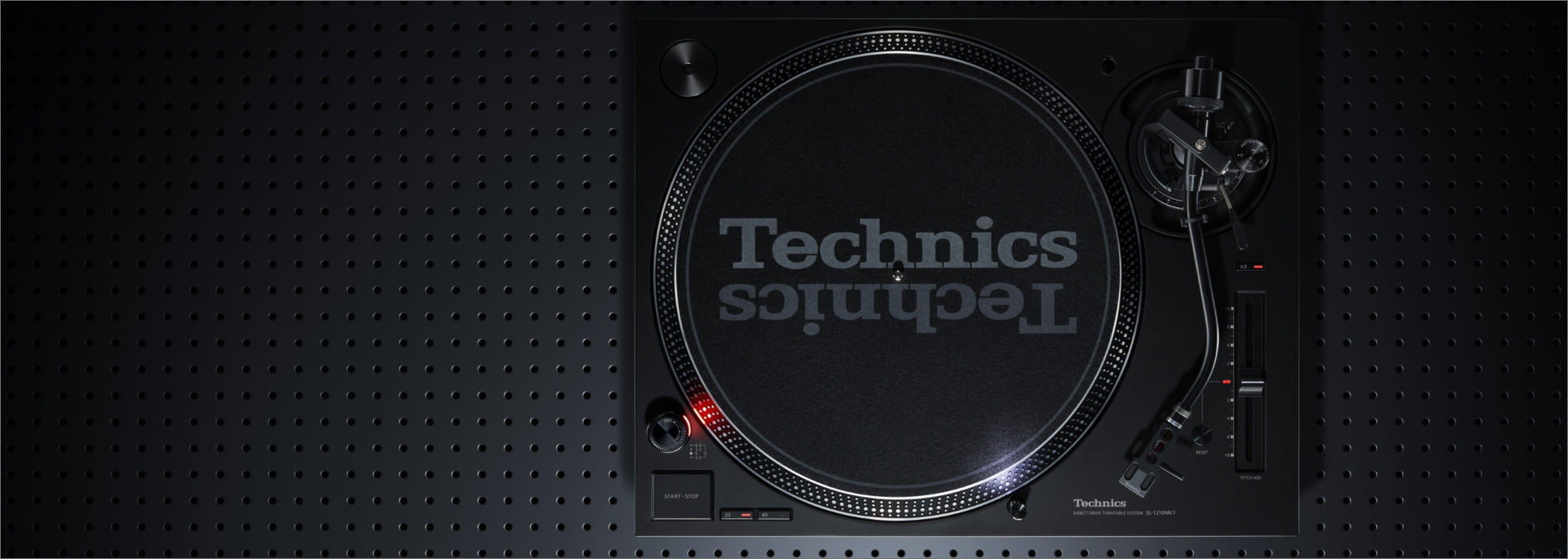Evolving Superiority of the SL-1200 Series
The SL-1200, which was the catalyst for the birth of DJ culture, continues to be a de facto standard even after more than 50 years from its market release. The SL-1200 turntable series has transcended the status of being audio equipment and is now treated as a “musical instrument.” Technics turntables have a long history worth knowing.
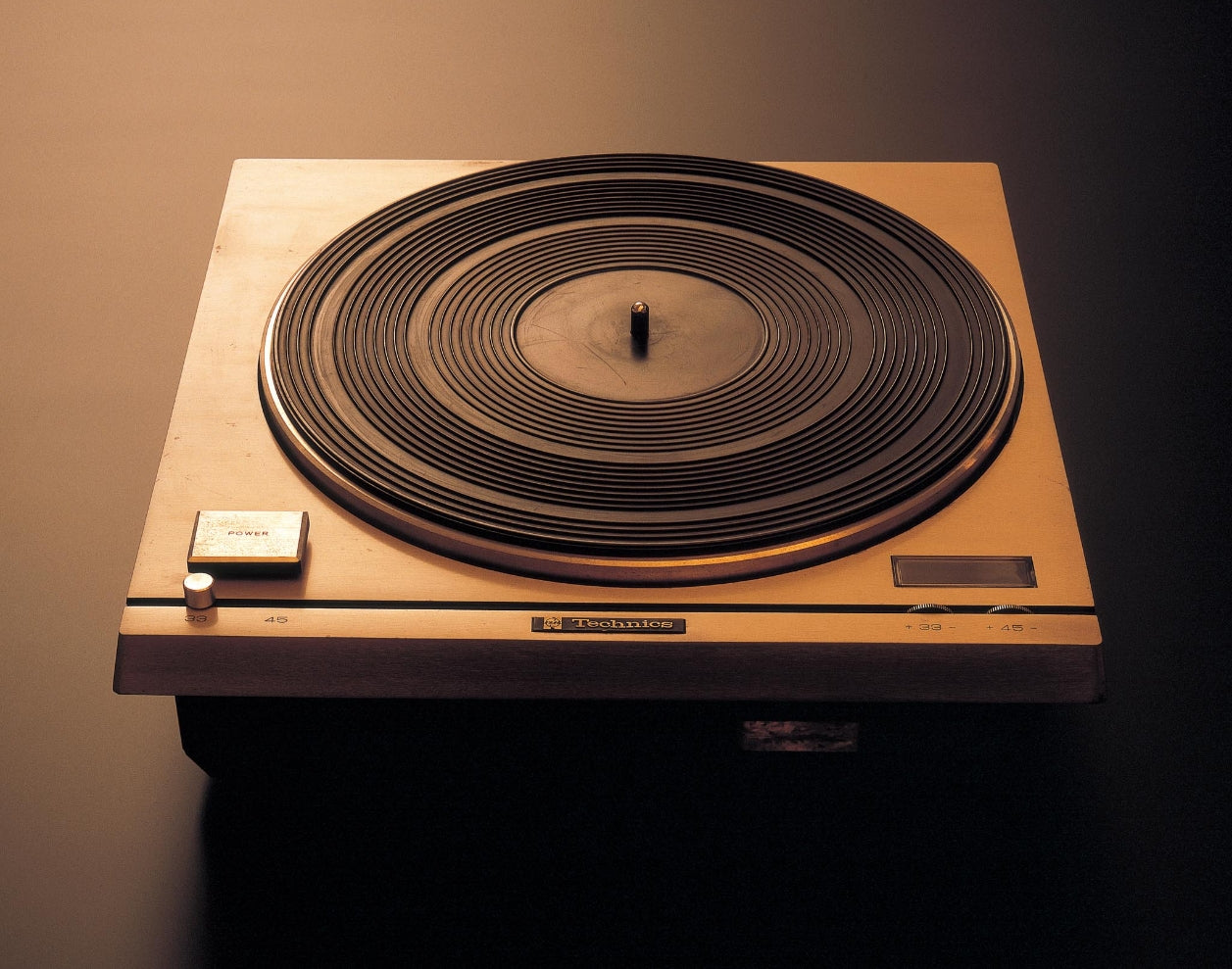
1970 / SP-10
The World’s First Turntable with a Direct Drive System
Introduced in 1970, the SP-10 was the world’s first direct drive turntable, which SL-1200 models developed thereafter were based on. In the belt drive system and idler system, noise is generated due to rotation irregularities or belt vibrations that result from aging. The direct drive system, in which a low-speed motor was directly connected to the platter, eliminated this problem because it used no belt or idler. The direct drive system thus established itself as an alternative drive system to the belt drive and idler drive leading to the development of the SL-1200. The stable rotation and quickness to reach the rated speed offered by the direct drive system undeniably had a major influence on the performance techniques of club DJs who began to appear in the late 1970s.
From 1960 to 1970, funk music became popular and it formed the base of all dance beats that followed. James Brown and many other music artists assembled new “Black Music” groove, who led to further development of hip-hop music.
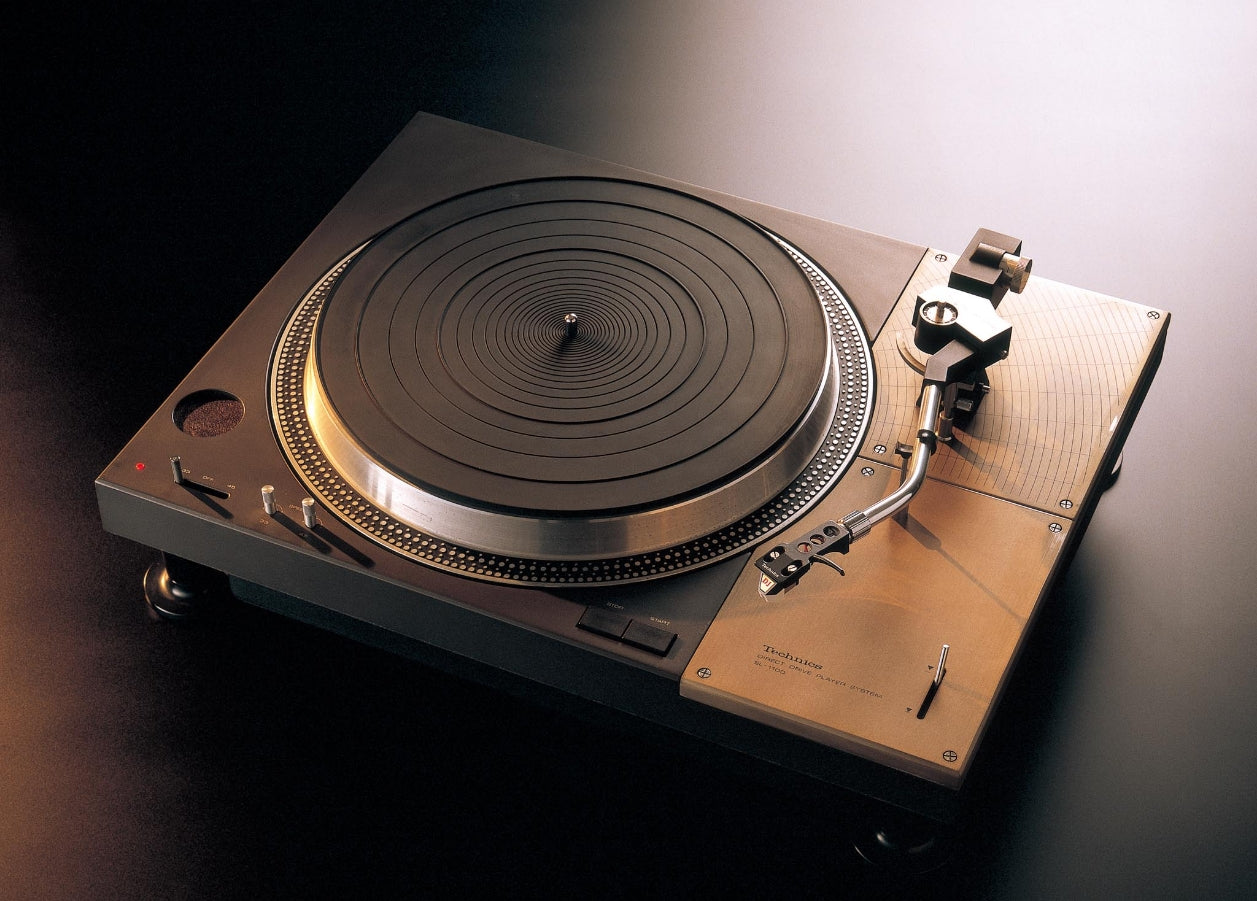
1971 / SL-1100
Prelude to the Birth of the DJ Culture
The SL-1100 introduced in 1971 was the second direct drive turntable model. In addition to the direct drive system, this model featured a die-cast body with integrated tonearm and platter to achieve the compact size. The integrated structure adopted in the SL-1100 had a major impact on the later disco/club scene.
Those years saw the birth of hip-hop music. DJ Kool Herc is known as the founding father of hip-hop music. He threw a birthday party for his sister in the early 1970s, and used two turntables to play music. His performance is said to be the origin of hip-hop music. In those years, many people held “block parties” in which DJs brought their own equipment to play music. Therefore, the ease of equipment use and its portability were key factors. The SL-1100 integrated construction turntable was the turntable that the founder of the hip-hop culture, DJ Kool Herc, continued to use at block parties.

1972 / SL-1200
The First Standard Turntable for the Disco/Club Scene
The SL-1200 was released to the market in 1972. It was equipped with a high-performance direct drive system in its compact rugged aluminium die-cast cabinet. This direct drive system brought the large and heavy-duty platter to the rated rotation speed in just 1/2 of a turn and had minimal rotation irregularity. The dots engraved into the edge of the turntable are a symbol of the SL-1200 Series. These features aptly met the trend and needs of the disco/club culture that emerged in the United States at that time. The powerful torque and stable rotation enabled easy and quick beat matching and cueing, while the vibration absorbing cabinet allowed stable play in a loud sound environment. The pitch adjustment dial was provided for the control of rotation irregularity, but DJs found a unique way to use it for controlling BPM. For some miraculous coincidence, the first-generation SL-1200 was packed with many functions that DJs wanted, so it quickly became a standard DJ turntable.
From 1960 to 1970, funk music became popular and it formed the base of all dance beats that followed. James Brown and many other music artists assembled new “Black Music” groove, who led to further development of hip-hop music.
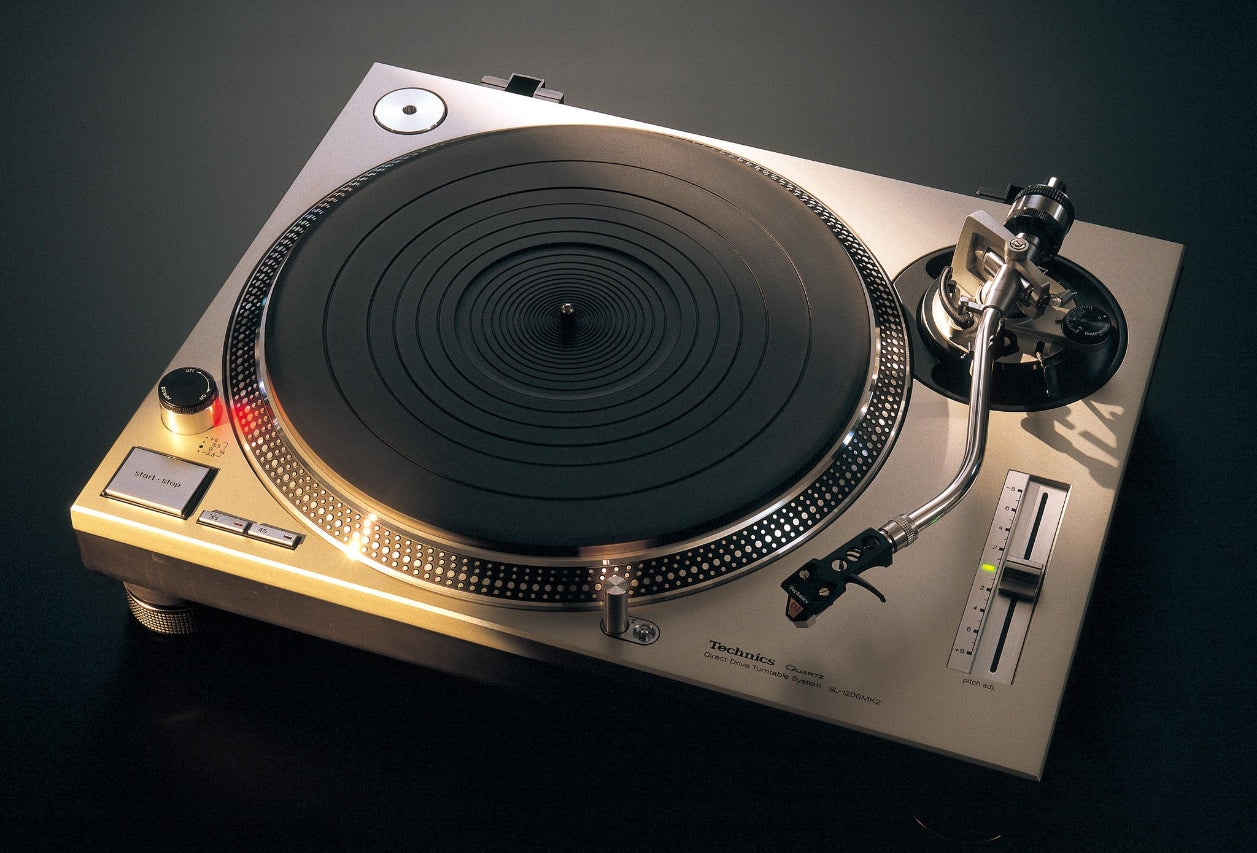
1979 / SL-1200MK2
The First Turntable to Incorporate DJ Functions
The SL-1200MK2 was the first Hi-Fi turntable designed in consideration of use by disco and club DJs. Technics’ staff visited clubs in Chicago and saw with their own eyes DJs using the first-generation SL-1200 as a “musical instrument.” For the development of the MK2, DJs’ opinions were collected and necessary modifications were made to satisfy their needs. One big advancement made in this model was the use of the Quartz Lock system. This achieved more accurate rotation control. Furthermore, a fader controller was adopted to simplify pitch adjustment. The vibration absorbing cabinet with integrally molded upper aluminium die-cast and lower special rubber was also created at this time. The SL-1200MK2 successfully responded to DJs’ needs. It was the bona fide model that changed the turntable from a record player to a “musical instrument.”
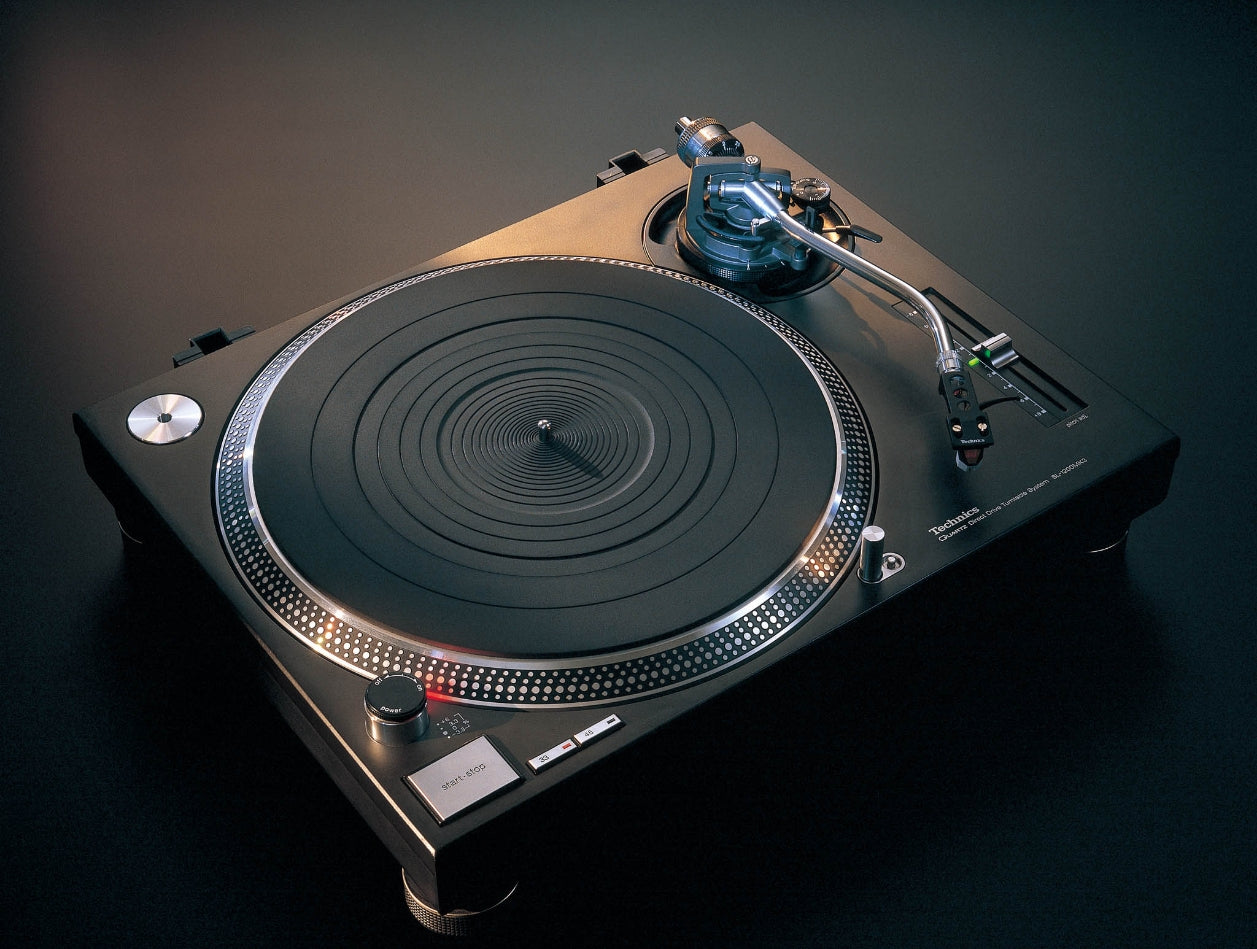
1989 / SL-1200MK3
A Turntable Symbolising Club Culture Maturity
The SL-1200MK3 debuted in 1989, ten years after the introduction of the epoch-making model of the SL-1200 Series, the SL-1200MK2. The MK3’s cabinet was filled with T.N.R.C. (Technics Non Resonance Compound) for even more robust vibration-proofing. The product colour was changed from silver to black. Another point worthy of mention is the inclusion of a slip mat as an accessory though it was not directly related to improving product performance. DJs used to make their own slip mats to suit their performance techniques, instead of using the rubber mat provided with the product. In view of this, a slip mat was included with the product. The MK3 was intended to better meet the needs of DJs than the MK2.
In the 80s and 90s, when the MK3 was marketed, house music and techno music began to gain popularity. Techno music started in Detroit, and music creators such as Derrick May, Juan Atkins and Kevin Saunderson joined in. Techno music also spread throughout the UK, Germany and Japan.

1995 / SL-1200LTD
A Limited-edition Model Commemorating Two Million Units in Sales
The SL-1200LTD was a limited-edition model, and only 5,000 units were produced. Each serial number plate was stamped with a sequential number. Many 24K gold plated parts adorned the cabinet, making the product resemble the gold turntable given to the winner of the DMC World DJ Championships. The pitch controller on the SL-1200LTD was provided with a reset button. When this button was pressed, the pitch returned to ±0% regardless of the fader position. This function was also provided on the SL-1200MK3D introduced later. When the 1990s began, DJ battles enjoyed greater popularity, and DJs’ techniques improved dramatically. DJs used the term, “turntablist,” to refer to their musicianship, and they actively created music by using their DJ techniques.
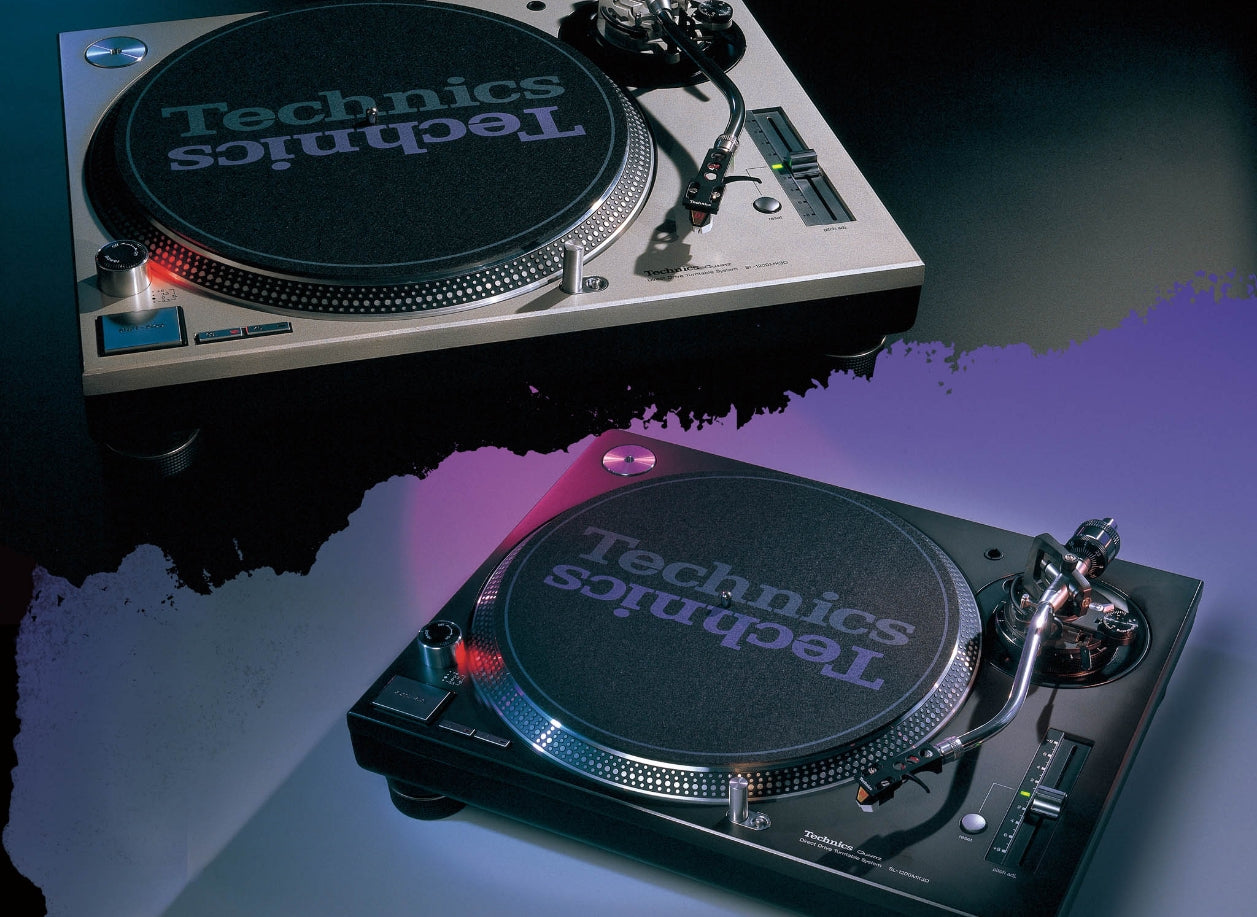
1997 / SL-1200MK3D
New and Detailed Functions as a Musical Instrument
The SL-1200MK3D released in 1997 was a minor-change version of the SL-1200MK3. One of the detailed changes was the discontinuation of the centre click of the pitch controller at the ±0% position. This improved the pitch adjustment accuracy near the ±0% position. Other changes included the addition of a head shell stand for a spare head shell and the modification of the power switch to help prevent accidental operation. These modifications were designed to enhance the ease of use in clubs and to strengthen the function of the turntable as a “musical instrument.” In the late 1990s, the dance music scene diversified at accelerated rates and became segmented. One of the popular music genres was Jungle/Drum’n’Bass, which originated in the UK. The music of this genre consisted of a fast break beat and deep bass line, and it took in various elements from all other music genres and gained further momentum.
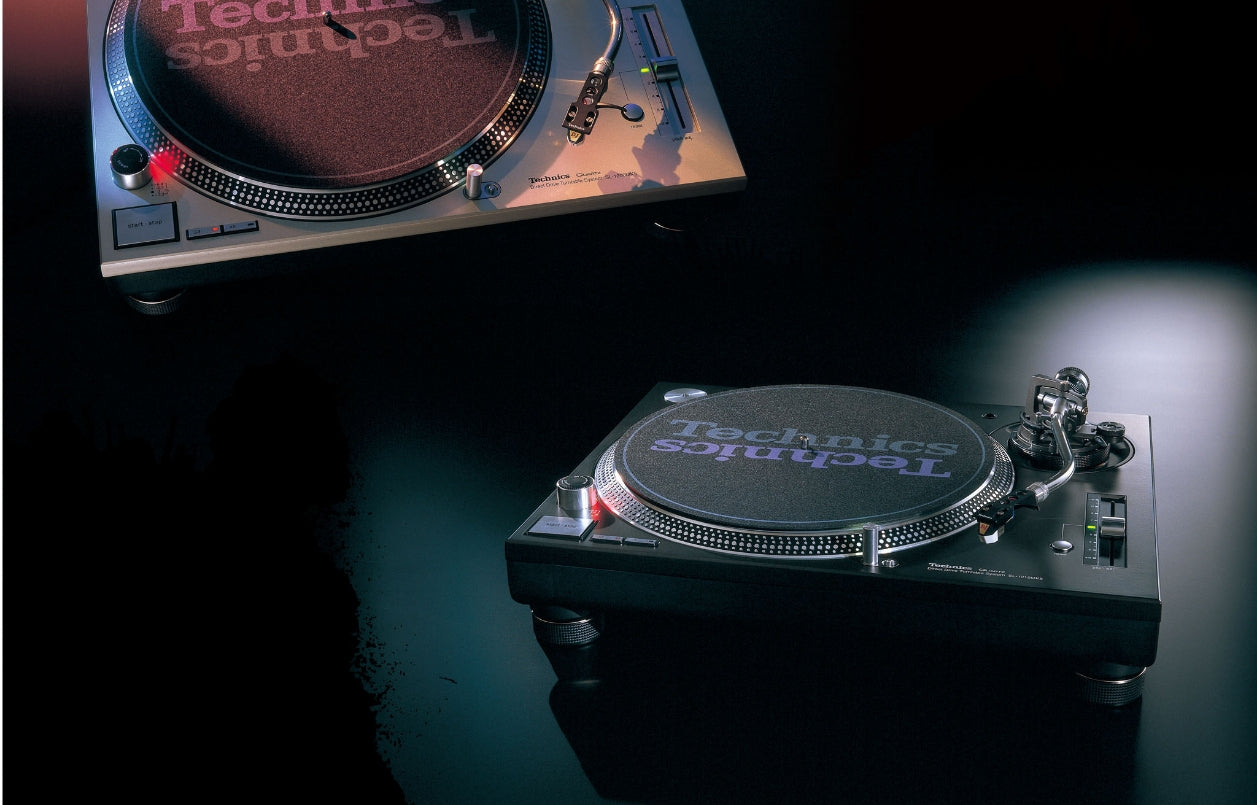
2000 / SL-1200MK5
Basic Performance Approached Perfection
For the SL-1200MK5, Technics strove to enhance the basic turntable performance and successfully reflected DJs’ needs to perform delicate operations. For example, the turntable brake speed could be adjusted through the hole in the platter, and a high-brightness, long-life white LED was installed as a stylus light. A graduation scale was added to the tonearm weight mounting section to facilitate the adjustment of stylus pressure. There were many detailed improvements in the MK5. Moreover, the high-sensitivity gimbal suspension tonearm equipped with a precision bearing ensured excellent tracking performance. Many performance improvements were made in places that were not visible to the user and raised the basic performance toward perfection.
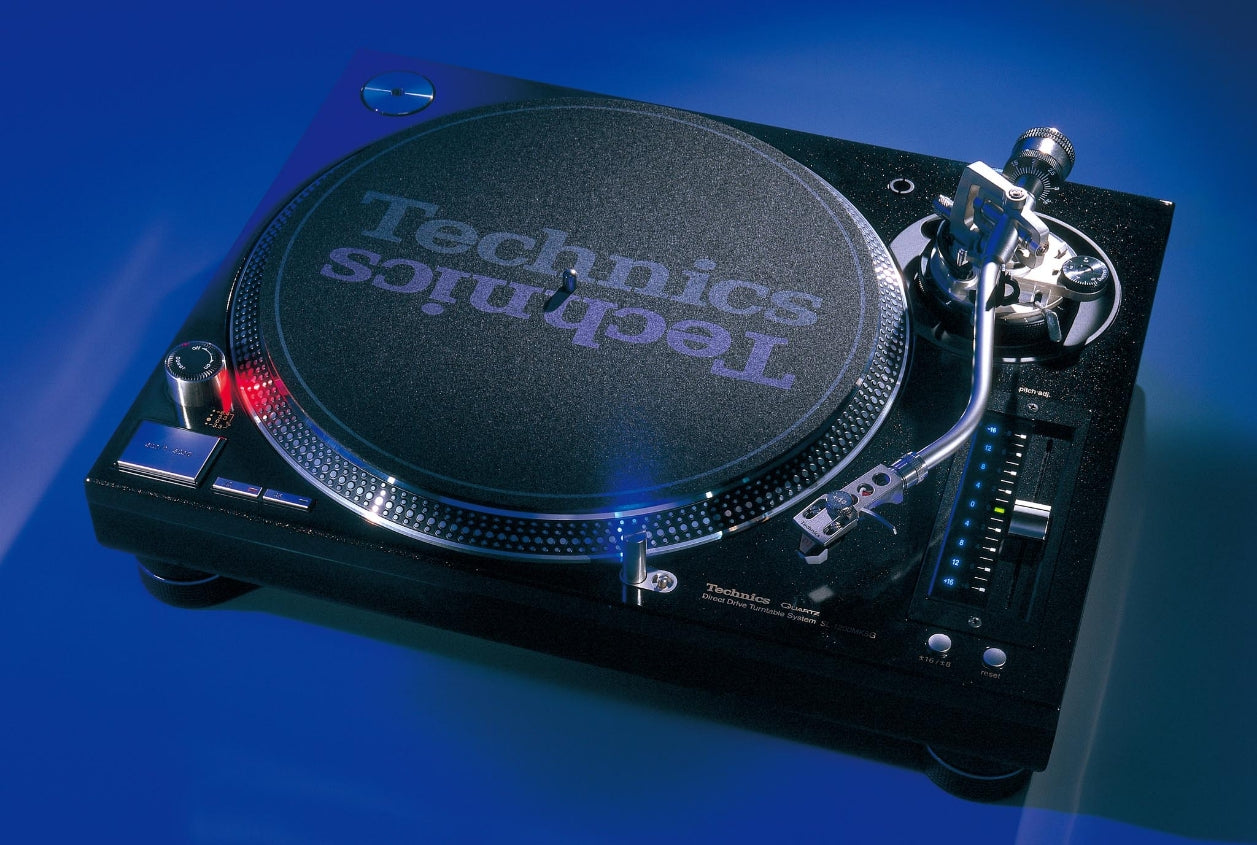
2002 / SL-1200MK5G
The 30th Anniversary Model Based on Accumulated Knowhow
The SL-1200MK5G was positioned as a higher-end model of the SL-1200MK5. The most significant modification was the installation of a horizontal load adjusting mechanism at the base of the S-shaped tonearm. This mechanism helped prevent stylus skipping, thus allowing the DJs to better concentrate on the performance. The adjustment range of the pitch controller was increased from the previous ±8% to ±16% in consideration of DJ use. The tonearm wire was an OFC (Oxygen Free Copper) wire for improved sound quality. Major changes that were visible to the user were the high-brightness blue LED stylus light and the face panel painted in metallic black. The SL-1200MK5G boasted an appearance worthy to be called the greatest DJ turntable of the 21st century.

